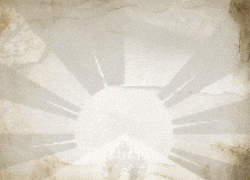By Jamyang Norbu
A few days after the appearance of my essay “Freedom Wind Freedom Song” on WTN and Phayul, I received an email from an old friend Tendar la, formerly an official from the Department of Information and International Relations (DIIR), now at the Office of Tibet, New York. He wrote to tell me that the DIIR had, some years ago, obtained a very old issue of The National Geographic Magazine, which carried a reference to the Tibetan flag. I managed to get a photocopy of the issue, Volume LXVI, Number 3, September 1934, and flipped to the main article, “Flags of the World” by Gilbert Grosvenor and William J. Showalter. And there it was on page 383, the national flag of Tibet, looking exactly as it does these days. It was between the flags of Switzerland and Turkey. The description was straightforward: “Tibet. — With its towering mountain of snow, before which stand two lions fighting for a flaming gem, the flag of Tibet is one of the most distinctive of the East.” Most probably the National Geographic Society had obtained the Tibetan flag from Tsarong Dasang Dadul, the commander-in-chief of the modern Tibetan army and a member of the Geographic Society.
There was no particular mention that the Tibetan flag was a new one or that Tibet was a new entry in their list. The editors had, in the case of some other countries, made qualifications where necessary. In the case of the German flag the editors had been careful to mention that that the Swastika flag of Nazi Germany had been adopted just a year earlier as the German national flag by a special decree of the Chancellor, Adolf Hitler. A special reference was also made in the case of Manchukuo (or Manchutikuo): “The Kingdom of Manchutikuo came into being just in time to permit a flag to find its proper place in our plates.”
It should be mentioned that in the case of such entries as Cambodia and Annam, there were clear mentions in each case that these countries were the protectorates of France, or in the cases of Lebanon and Syria that they were under French mandate. Even the old flag of Korea, (then Chosen) was grouped together with Japan, and mention made that the Japanese flag had replaced this old Korean flag. No such qualifications were made in the Tibetan case. I am not in any way citing these factoids to make Tibetan readers feel good, but to bring forward the observation that change is a condition of history. Going through the list and seeing the flags of nations that don’t exist anymore, gave one the feeling of what the Japanese call mono no aware, melancholy at the realization of the fleeting quality of human existence. Who even remembers a kingdom of Danzig, or even the state of Manchukuo, both of whose flags the magazine carried? These nations are now “history” in the most terminal sense.
On the other hand the National Geographic catalogue did not carry the flags of India, the Philippines, Israel, Ireland, Libya, Singapore, Indonesia, Burma, Nepal (Nepal’s present flag was only adopted on 12, December1962), Malaysia, Mongolia, Bhutan and many other present day nations. Even Australia and Canada do not rate separate entries as nations but are grouped together under the British Empire. The magazine listed 77 independent countries in 1934. Right now we have 191 member states in the United Nations, and every so many years some new nation is inducted. Could Tibet be the 192nd or the 193rd or even the 200th free nation to join the United Nations?
My good friend Lhasang Tsering is an inspiring speaker, as those of you who have seen the documentary film Cry of the Snow Lion will know. Now and then he ends his talks with this interesting observation. “Tibetans, as Buddhists, believe that all phenomenon, everything, is impermanent. Why should we have to believe that only China’s occupation of Tibet is permanent.”? Why indeed?
(Readers who come across similar references to the Tibetan flag, or old atlases and maps where Tibet is shown distinct from China, or any other such unusual references to Tibet in books, periodicals, websites or museums are requested to contact me at jnorbu@blomand.net)









